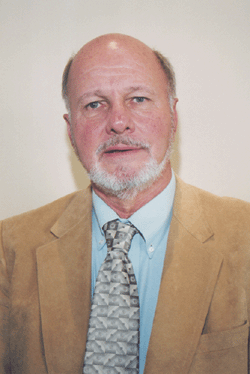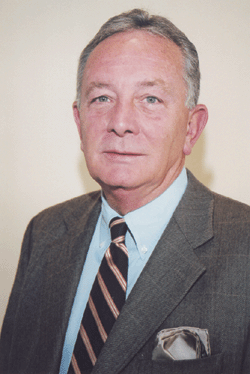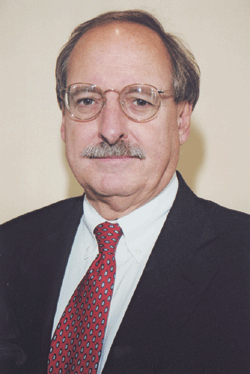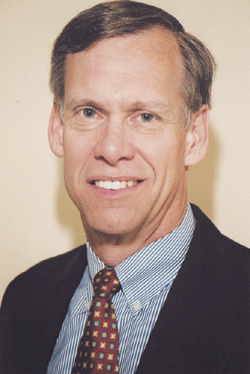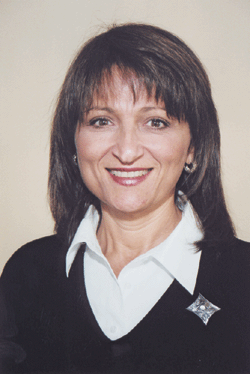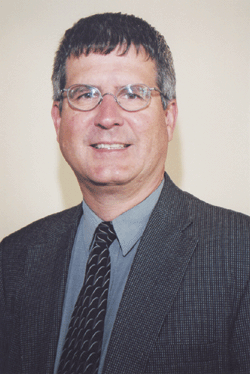America’s Insulation Industry: Where Are We Headed?
Insulation Outlook recently hosted a high-level ‘information interchange’ among industry experts on issues affecting today’s insulation business community. The highlights of this forum appear in this article. The objective of the day-long event was to open up for debate and discussion a variety of topics suggested by readers of Insulation Outlook. These topics included: trends in the insulation industry; energy legislation and energy codes; trends in green construction; the importance of facility maintenance; and installation and craftsmanship. See the sidebar for a profile of invited guests.
Where Does the Industry Stand on Product Innovation?
Kirk Liddell (Moderator) The image of insulation products is that they never change. Is this a valid statement? Where does the industry stand on product innovation?
Ron King There have been many improvements to existing products, but very few actual new products. Even though imported materials are being used more today, they still have not brought new products to the market. The next significant improvement will more than likely be the removal of Kraft paper from jacketing material. The current economic environment makes it very difficult for manufacturers to conduct the research on new products, and the introduction/acceptance process is not an easy or inexpensive task.
Gary Kuzma I agree that manufacturers tend to focus new product development on what appears to be emerging industry trends. Sustainable design is a new trend that’s becoming widely accepted. When you think about sustainable design, you look for products that are formaldehyde-free, have low VOCs, high recycled content, etc. Manufacturers aren’t necessarily producing as many new products as they are improving or enhancing old products. They are relabeling and repackaging products and promoting them toward current market trends.
Mike Sanders From an end user’s perspective, my company wants and expects innovation. Our senior management is looking for technology, innovation and the life cycle benefit of investing their money. When it comes to funding insulation projects, they want to know what kind of innovative technology will be included in the work scope. At Sunoco, we take a very strong position that we are going to invest in infrastructure. We want to do the best thing technologically, and not do it the same old way. The one question I always ask my consultants is, "Is there a better way?"
Paul Stonebraker Unlike Sunoco, which welcomes innovation, I have found that product innovation runs into serious problems when it comes to user acceptance. Over the last couple of years, there have been a number of new products introduced on the market, some of them viable, which just didn’t go anywhere. The problem is that at the field level, people just don’t have the technical knowledge and are very resistant to change. New product acceptance depends very much on educating end-users.
King I agree that a lack of education can be a serious barrier to change. Because of the economic environment of the last couple of years, manufacturers have had to cut back on staff; so there are not enough people calling on the engineering and architectural communities to help educate them on the value of insulation.
Kathie Leonard The lack of resources is a definite problem for small manufacturers who want to introduce a new product. It’s a hard sell, especially for small manufacturers who just don’t have the people out there selling. And, because there is a separation between the manufacturer and the end user, we have to guess what the market might want, but do we really know? No, we don’t.
Where Does the Industry Stand on Process Innovation?
Liddell Compared to other industries, is the insulation industry current with advanced business-to-business technologies that can help streamline processes, increase efficiencies, and decrease the cost of selling and installation?
Leonard From a process standpoint, one of the areas where our industry has made great strides is in the use of information technology. The internet has allowed my company to become an ‘educator, communicator and a facilitator.’ In the ‘old’ days, we manufacturers expected distributors and contractors to do all of our selling for us. That is not the real world today. By using sophisticated information systems we can get the information out to the end user and still utilize other folks within the chain. Through our website, we ask people what their application is; we suggest the types of products to use; we help them get information and to go through the rest of the channel to get the product.
Kuzma I agree that from a process point of view, the internet has been revolutionary. The ability to download technical information and tools, such as the 3E Plus® insulation thickness program, has had an enormous impact on the process of disseminating information. The willingness of organizations and government agencies to make tools like the 3E Plus® available is an enormous benefit to the engineering community. It helps us validate a design and convince our clients of its benefits.
Sanders Using the internet to design on-line is what the younger generation is about. All they want to do is work on the internet. So my job is to make sure they know what’s out there in terms of vendor sites and all of the Department of Energy websites.
Stonebraker Despite all the advances in information technology, this industry has not reached out to the majority of people who don’t know the value of what we have to sell. Hopefully, by increasing the circulation of Insulation Outlook magazine we can make people knowledgeable about insulation who never even think about it normally. We still have to make a giant leap. We all know the information is good. We all know the information is valid. But, so many people I run into every day have specs that are 30 years old. This has to change.
Does the Insulation Industry Need Standards?
Liddell In the 1990s, the industry was called upon to comply with voluntary energy conservation standards. Have voluntary standards worked?
King Our industry has been lacking an acceptable universal standard for years. I am not sure we have ever had universal standards. Depending upon whom you talk to, manufacturers, contractors, distributors, engineers, etc., you more than likely would get a different answer or recommendation. Standards that would be readily available would be very helpful, especially today when in-depth knowledge of insulation systems is lacking in many arenas.
Kuzma I question the viability of creating a total insulation package standard, but I do feel there is a benefit. There exist ‘best practices’ such as Process Industry Practices (PIP) for the industrial sector, and "National Commercial and Industrial Insulation Standards" published by MICA for the commercial sector.
King Even with PIP, however, there’s a problem of ‘acceptance and enforcement.’ For example, companies with multiple plants – where one plant accepts a certain product while another plant 100 miles down the road does not.
Sanders Looking at insulation standards from the end-user perspective, frequently standards change when a facility’s ownership changes, and we end up with multiple standards in place. This leads to considerable confusion among the in-house folks, the vendors that supply insulation materials, and the contractors who install it. We expect to adopt the PIP standards in 2004 and have already begun the dialogue by including our consultants and our contractors in this effort. This is one way that we can strive to make sure that all of Sunoco’s insulation standards are consistent throughout our facilities.
Stonebraker Be careful what you wish for. If you have a perfect, accepted and enforced standard everywhere, where would be the incentive to reach out and try new things?
Kuzma Voluntary energy conservation standards such as ASHRAE 90.1 already exist for the commercial/residential sector. That standard provides the basis for some of the energy codes that have been adopted by a number of governing authorities at state and local levels. The ASHRAE standard, however, sets a minimum level of insulation. And, in my opinion, the minimum level is too low. It needs to be upgraded.
Kenneth Mentzer Another potential voluntary program, in addition to the existing DOE Best Practices, that may be on the horizon is an "Energy Star" program for the manufacturing sector. While there is nothing specific in place yet, the EPA is being encouraged to think about creating such a program. It would involve indexing what normal practice is, and a star would be awarded for improving on that practice.
Energy Legislation and the Insulation Industry
Liddell The insulation industry has the potential to be significantly impacted by the passage of state and federal legislation. Where do we stand on energy conservation measures currently under consideration by Congress?
Mentzer The current energy bill does not have a lot in it for the industrial sector in terms of incentives. But, it has a whole lot in it for energy efficiency in general. The question now is whether or not it’s going to pass in this session of Congress. [It did not.]
When it comes to future legislation, there will be a number of ‘drivers’ that will ‘fuel’ future energy bills. An example of a ‘supply side’ driver is a recent report by the National Petroleum Council [an advisory group to the Secretary of Energy] that modeled the supply of natural gas to the year 2025. It projected that starting in 2007 or 2008 there is going to be a big gap between increased demand and supply and reported that this gap could be filled by efficiency activities on a number of levels. In essence, what the report is saying to the Secretary of Energy is that if you don’t improve the efficiency of industrial boilers and processes, there is going to be a shortfall in the supply.
On the environmental side, there are going to be big drivers in terms of emissions reductions under the Clean Air Act. When you look down the road, these drivers offer a number of opportunities for NIA’s "Growing the Insulation Industry Program" and for the application of the 3E® Plus program, especially where there are incentives for the manufacturing area to become more energy efficient.
Leonard Canada is a country that has shown great enthusiasm for incentivizing their energy intensive industries to insulate. My firm is selling a lot of materials into Canada and much of that is due to the fact that the government supports programs to save energy.
Mentzer Canada, in contrast to the United States, has signed on the climate change treaty and, as Kathie knows, it does make a difference.
What Kind of Programs Are Available to Help Identify Opportunities for Energy Conservation?
Liddell Do you know of any guidelines that have been developed to help industry conserve energy? How successful are they? Are there any programs that industry should be thinking about as a way to communicate the benefits of insulating to code?
Dr. Tony Wright The DOE BestPractices Program focuses on working with industry folks to help them identify opportunities for improvement in a number of areas: compressed air; motors; pumping systems; steam; processes; and verification and validation of new technologies. We do a lot of work developing fact sheets, documents, different software programs for assessment and assessment support activities. Twenty-six universities now perform assessments for small to medium businesses. Over the last four to five years we have conducted plant-wide assessments as part of a program in which DOE provides matching funds for companies to do plant-wide assessments in terms of overall efficiency, not just insulation. Some of the bigger companies have identified $1 million plus in savings. We have listed qualified specialists on the DOE Web site. We are doing a lot of work on metrics to see what improvements are attributable to the program. The numbers keep building each year. It’s a great way to demonstrate the value of the program.
Mentzer We are working on version 4.0 of the 3E Plus® insulation thickness software program. It’s going to be easier to use and is going to display data in a lot more clearer way. We are working on getting the tool into engineering schools and into various continuing education seminars such as the ASHRAE Learning Institute to try and get people to use it as part of their daily operations. It will tell you the energy you will save, the economic thickness and also the environmental emissions savings. It has the potential to become even more important if the regulatory environment changes in terms of emissions. For example, carbon credits could be very, very valuable in 15 years or so and the program will help calculate emission reductions."
Jim Getgood I agree that the 3E Plus® program is an excellent tool. As a contractor, our biggest issue seems to be a reluctance on the part of our customers to share specific plant information needed to run the program. People really don’t want to take the time to provide the information that is needed. Where 3E® Plus has really succeeded for us is in the distribution of the software to customers. We’ve provided training for plant engineers on the software so they can go back and resolve their own issues and come up with their own answers. Now that has been a great benefit.
Sanders We use 3E Plus® for post audits. We use it to check the savings we thought we were going to get. We then publish a report. Nothing turns an executive on more than some kind of report saying this is what I delivered. When you deliver savings, it makes it easier the next time you go back and ask for money.
Leonard Another software program that’s gaining importance is the Maintenance Audit Program (MAP) energy management tool currently being used by several industries to maintain their insulation systems and control energy costs. It is a longer term approach and provides prioritization of projects within a plant. It also incorporates the 3E Plus® program.
H. Vaughan Privett The National Insulation Training Program (NITP) is an education program developed by NIA to provide education on insulation systems. It covers all aspects of insulation as a powerful technology for enhancing energy and cost efficiency, and process performance. Some of the things students learn are the principles of insulation, system design criteria, insulation thickness determination, general insulation system installation considerations, specification development and insulation system maintenance.
Sanders Many of my people who attended the NITP class are now training others in the company. We take the "train the trainer approach" and are now training our construction administrators so they know what to look for and what to insist upon when it comes to quality of workmanship.
Howard Wiltshire The Insulation Energy Appraisal Program (IEAP) is a certification program developed by NIA to educate appraisers on how to quantify the amount of energy and actual dollars a facility is losing with its current in-place insulation systems and demonstrate the real world benefits of a more efficient system. An insulation energy appraisal can show industry how to significantly reduce energy costs and environmental impact. Managers can utilize the data from the appraisal to make sound business decisions regarding insulation that will have significant payback for the life of their facility. The ultimate benefit of this program is reduced energy consumption for the energy user.
The Role of Insulation in Green Construction
Liddell Sustainable development is the most vibrant and powerful force to impact the building design and construction field in more than a decade. It is the practice of increasing the efficiency with which buildings and their sites use energy, water and materials, and reducing building impacts on human health and the environment through better siting, design, construction, operation, maintenance and removal – the complete building lifecycle. What is the role of insulation in ‘green’ buildings?
Kuzma A ‘green’ building rating system that’s becoming increasingly popular is the Leadership in Energy and Environmental Design" (LEED). LEED was developed by The United States Green Building Council (USGBC) to evaluate the environmental performance from a whole building perspective over a building’s life cycle, providing a definitive standard for what constitutes a ‘green’ building. It is a voluntary, consensus-based, market-driven building rating system based on existing proven technology. How does insulation relate to this? If you improve upon the basic ASHRAE energy standard you can earn points towards becoming a building that is LEED certifiable. Most government clients and many corporate clients are now interested in building LEED-certified buildings. I think as education regarding sustainability continues to evolve, more and more people will jump on the bandwagon. It has gained very rapid growth in the commercial sectors. From an insulation point of view, the LEED program is geared primarily toward energy-efficient design and improved occupancy comfort. Insulation is a vital ingredient to accomplish both.
How Do We Get Companies to Recognize the Value of Maintenance?
Liddell Insulation systems that are not well maintained can lead to a variety of problems, including mold. If facility owners know this, then why is it that most maintenance budgets are traditionally under-funded?
Getgood That’s because maintenance is a difficult thing to get your arms around. The facility owner thinks he is doing too much, and the contractor thinks he is doing too little. From my experience, the vast majority of dollars expended are for repair or modification of an existing system as opposed analyzing a system and truly performing maintenance on that system.
King We are competing for available capital or maintenance dollars. Insulation is not sexy; it’s not some technology gadget; it’s not new – it is a proven technology that is often overlooked. Many plant process systems continue to work even if the insulation is not working, as it should due to damage etc.; thus insulation is often "put off" until another day. Unfortunately, that can lead to even larger requirements for capital – maintenance dollars when corrosion under insulation occurs. Insulation needs to considered a valuable component to the overall system and not an afterthought.
Mentzer At some point, energy costs and environmental regulation are going to convince people to look at different models. Perhaps outsourcing is the answer. Today, everything is outsourced. For example, an outside company could actually own the insulation system and lease the system and provide ongoing maintenance to the facility as a service. Updates in efficiencies to the system could be made as needed. Every three to six months a report could be supplied to the facility owner. The owner wouldn’t have to worry about the system. He just wants what is needed to get the job done. It won’t take long for big companies to understand that if they keep getting fined, that there must be a better way of maintaining their systems.
Training – The Key to Maximizing Performance
Liddell A properly designed, specified, installed and maintained insulation system provides maximum benefits to the end user. Any breakdown in this process can result in a system that does not perform. Sometimes the installer or craftsman is the only trade left with an opportunity to correct errors in design. The question is, ‘what kinds of union and non-union training programs are available for insulation contractors and installers?’
Stonebraker In the union sector, one of the things that we’ve done recently is to disseminate the NIA presentation "Insulation: The Forgotten or Lost Technology" to every Local in the country. The idea is to give installers an appreciation of what they are doing. We want them to realize they are performing a service – energy conservation. The union has a pretty comprehensive training program. Every Local is now computerized, and we are using every available technology.
Getgood Training is a huge part of our non-union business. The push is coming from the industrial markets- primarily from process safety management – to have some assurance that the people from our company who are working in their facility cannot create a catastrophic event. This has made a real shift in the open shop environment regarding training. Currently we are utilizing the NCCER industrial curriculum. This has just been approved, and so we are training to that. In fact, in one facility our people have to have their training noted on their badges. Facility monitors actually come around and check our people in the task they are doing and check their badges. If they haven’t been trained to do what they are doing, it creates quite a problem for us.
Privett Summarizes the Day
Process innovation versus product innovation – we seem to have one, but not the other. While there has been very little product innovation in our industry, there has indeed been innovation in the way we do business. The innovation of specification, selection and maintenance tools fundamentally changed what we deliver to the customer. Technology has transformed our business from being "just a vendor" to that of a partner working to assure that the business, process, energy and environmental objectives of clients are met with properly specified, designed and installed systems.
We’ve got drivers out there that are forcing us to change. And while we resist…the ‘green’ movement, voluntary codes and standards, government programs calling for more aggressive approaches to emission reduction and energy conservation are providing us with opportunities to demonstrate that insulated technologies are a viable solution. We need to quit resisting…take advantage of what’s happening – get our people trained, communicate more effectively to energy users, and use the technology tools out there to make the decision to insulate an easy one.
Maybe that’s it. We all know insulation’s true value. But we’re always waiting to be asked. We’re always waiting for something else to be the driver.
We need to get in the driver’s seat. There are some big things happening in our ever-growing energy and environmentally conscious world. We all need to step outside the box (manufacturers, distributors, contractors) and think about how we should do things differently. Should our products look the same; should they go to the market the same way, and will product innovation eventually drive installation precision and ease?
Final Question…I ask you, our industry members and industry readers, if we could develop a ‘product’ and bring it to market knowing all that we know now, what would it be, what would it do, how would it work?
Maybe that’s the subject for next year’s forum.


